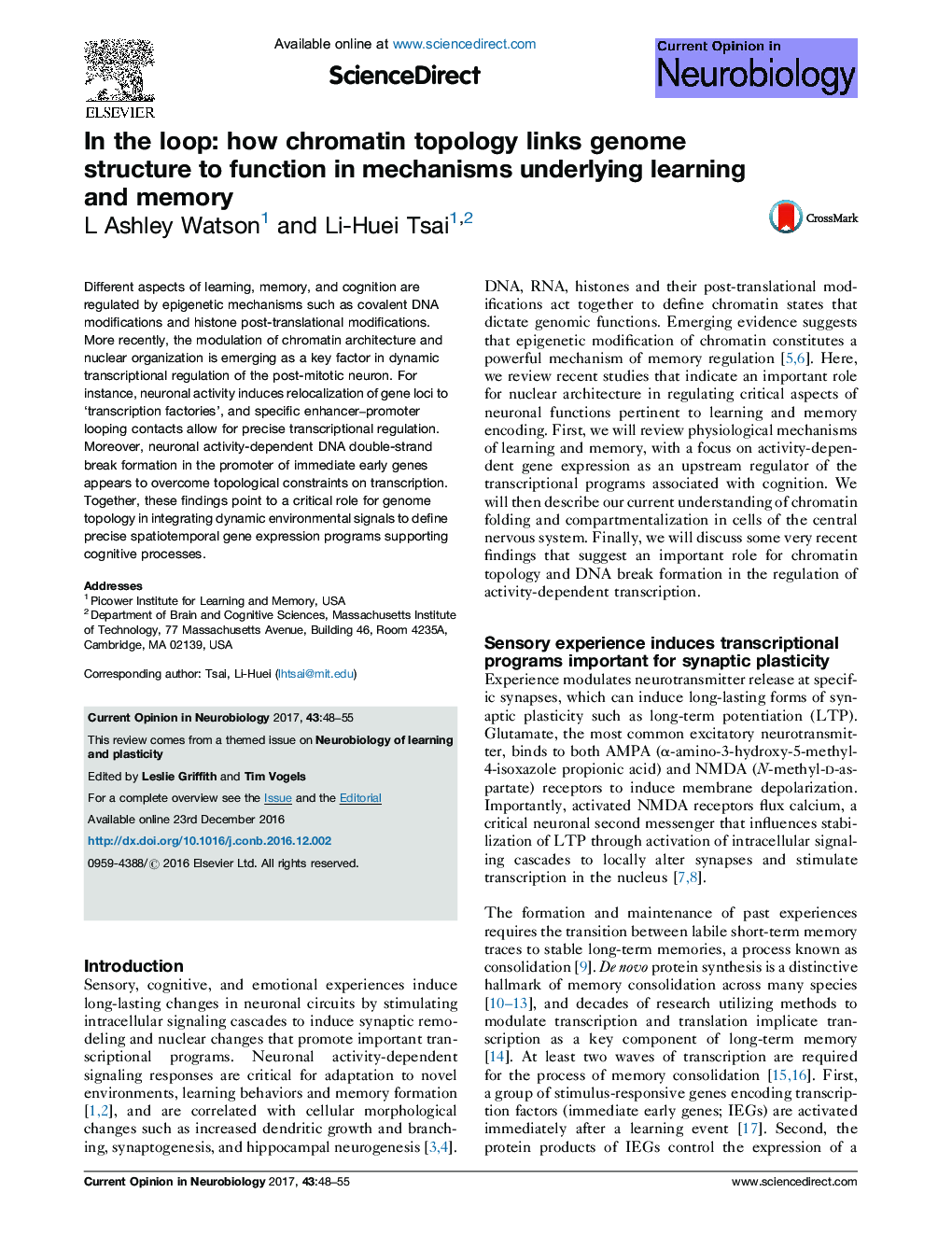| Article ID | Journal | Published Year | Pages | File Type |
|---|---|---|---|---|
| 6265995 | Current Opinion in Neurobiology | 2017 | 8 Pages |
â¢Epigenetic regulation represents a key mechanism of learning, memory and cognition.â¢Chromatin topology is emerging as a major regulator of neuronal gene expression.â¢Dynamic chromatin topology changes correlate with activity-dependent transcription.â¢DNA double-strand breaks facilitate induction of immediate early gene transcription.
Different aspects of learning, memory, and cognition are regulated by epigenetic mechanisms such as covalent DNA modifications and histone post-translational modifications. More recently, the modulation of chromatin architecture and nuclear organization is emerging as a key factor in dynamic transcriptional regulation of the post-mitotic neuron. For instance, neuronal activity induces relocalization of gene loci to 'transcription factories', and specific enhancer-promoter looping contacts allow for precise transcriptional regulation. Moreover, neuronal activity-dependent DNA double-strand break formation in the promoter of immediate early genes appears to overcome topological constraints on transcription. Together, these findings point to a critical role for genome topology in integrating dynamic environmental signals to define precise spatiotemporal gene expression programs supporting cognitive processes.
